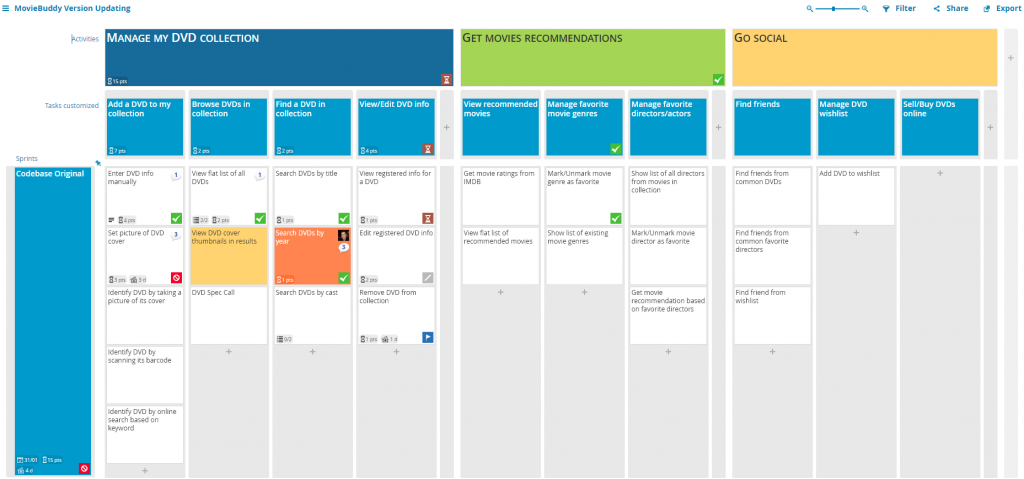It can be tricky to see and prioritise hundreds of Jira entries, you need to know which of them are the highest valued features so that you can build them in an effective agile order. One easily adopted method is using Story Mapping and over a messy product backlog. Here I write how it is easier to create a quick User Story Map with the JIRA integration tool at FeatureMap.co
User Story Map is invented by Jeff Patton, he wrote a book (User Story Mapping) to explain about the concept and its practice, it is highly recommended to read the book to use story map more efficiently.

Story mapping visualises the user’s journey in a step by step flow. These steps create a clear visual display of the requirements and help define your backlog. Compared to a flat backlog a user story map has added dimensions of position and movement through all verticals of your product. This allows you to first map and then navigate the entire user space of your product. With a user story map, you can then see you entire product, the full range of features and steps and gain a better understanding overall.
How a Story Map works

Groups: The broad actions that users take in order to reach their larger goals.
Lists: lower level under Groups, create the backbone of the map by telling the story or narrative of the user’s journey.
Stories: Basic building blocks of a map which describe something you can delivery and evaluate. Each block can be viewed for deeper detail.
Layers: Horizontal layers which split the story map to show what is in and out of each release.
Benefits of using Story Map
Here are few benefits of using story map as a user story tool:
- Manage backlog with an overview and leveled structure
- Brainstorm, discuss and prioritize user needs in a collaborative approach
- Manage activities and tasks, and divide them into epics or user stories systematically
- Arrangement and prioritization of user activities and user tasks, or drill down to refine them into related epics or user stories
- Manage user stories in the online for both remote and co-location environments collaboratively for keeping everyone in your team the same page.
